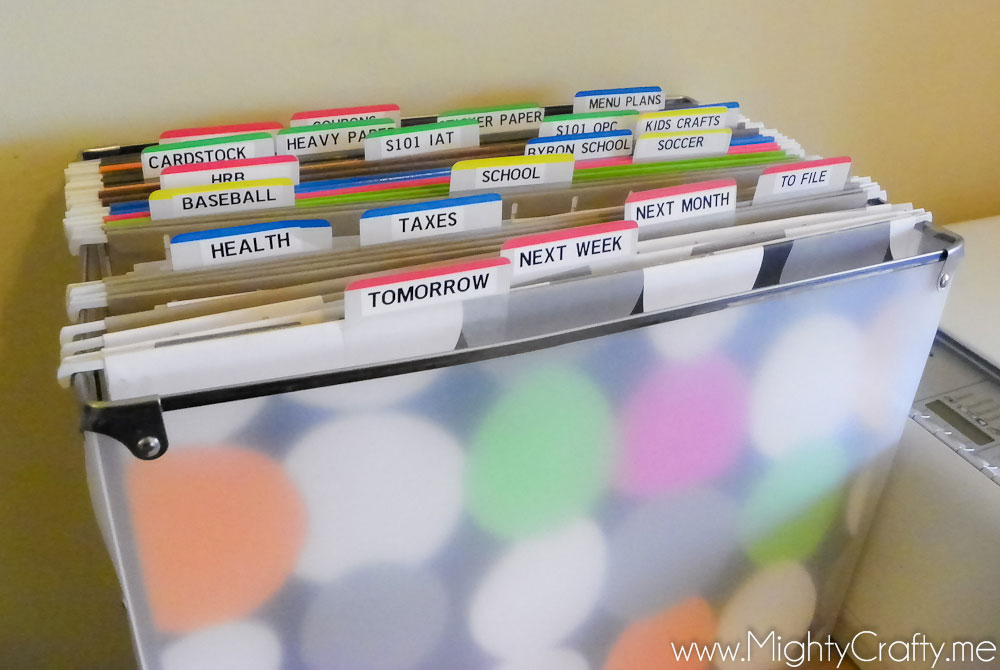Streamline Your Office: How to File Paperwork Efficiently

Organizing an office environment efficiently is pivotal for increasing productivity, reducing stress, and enhancing the overall workflow. One significant area often overlooked in this process is how to manage paperwork. Despite the digital transformation, paper documents still play a crucial role in many businesses. This blog post will delve into practical strategies for efficiently filing paperwork, ensuring that your office remains streamlined and your important documents are always within easy reach.
Understand Your Paper Flow

Before diving into the physical act of filing, it's crucial to understand the flow of paper in your office:
- Identify the origin of incoming documents: mail, internal memos, or client submissions.
- Determine where the documents should go next: who needs to review them, sign off, or take action.
- Decide on the final disposition: archiving, shredding, or filing.
This knowledge helps in setting up a system tailored to your office's needs, reducing unnecessary steps, and promoting a smoother flow of information.
Categorize Documents

Creating categories for your documents is fundamental in efficient filing. Here's how you can categorize:
- By Type: Invoices, contracts, employee records, etc.
- By Project or Client: Useful for businesses with multiple clients or projects.
- By Time Frame: Monthly, quarterly, or annually, for time-sensitive documents.
Using categories helps in quick document retrieval and minimizes clutter.
Choose the Right Filing System

Selecting the right filing system is as important as the categorization:
- Alphabetical: Best for businesses dealing with many clients or contacts.
- Chronological: Ideal for time-sensitive records.
- Numerical or Color-coded: Useful when documents have unique identifiers or when you want to visually differentiate categories.
Each system has its pros and cons, so choose or combine systems based on what fits your office's operational style.
Organize Your Physical Space

A well-organized physical space enhances document management:
- File Cabinets: Opt for lockable drawers for sensitive information.
- Hanging Files: Use color-coding for quick categorization.
- Binders or Folders: Effective for small-scale organization or temporary storage.
- In-and-Out Trays: Keep track of incoming and outgoing documents.
Ensure that your workspace is arranged to minimize physical effort in retrieving documents.
Implement a Retention and Destruction Policy

Not all documents need to be kept indefinitely:
- Retention Schedules: Set policies on how long to retain specific document types.
- Secure Destruction: Shred or securely dispose of documents past their retention period.
This policy prevents the accumulation of unnecessary paperwork, saving space and reducing clutter.
Use Technology to Your Advantage

Integrate technology to streamline the filing process:
- Scanners: Convert paper documents into digital files to reduce physical storage needs.
- Document Management Systems (DMS): These systems can automate categorization, indexing, and retrieval of documents.
📌 Note: Always ensure that your digital storage complies with data protection regulations.
Maintain Consistency

Consistency in filing is key:
- Training: Ensure all staff members are trained on the filing system to maintain uniformity.
- Regular Audits: Periodically review the filing system to ensure it remains effective and up-to-date.
Consistency minimizes errors and makes the system more intuitive for everyone involved.
Streamlining your office's paperwork filing doesn't have to be a daunting task. With a well-thought-out system, categorization, and the right tools, you can ensure that documents are easy to file, find, and manage. By understanding your paper flow, choosing the appropriate filing method, and integrating technology, you'll create an environment where productivity thrives, and the office runs smoothly. Remember, the goal is not just to file documents away but to organize them in such a way that they serve your business efficiently.
What if my office has too many documents to file?

+
Consider a combination of scanning to reduce physical storage and implementing a robust filing system to manage the remaining paper documents efficiently.
How do I ensure data privacy when digitizing documents?

+
Ensure your digital document management system complies with data protection laws, use encryption for digital files, and restrict access based on need-to-know.
Can I use digital filing instead of physical filing entirely?

+
Yes, many businesses are transitioning to entirely digital workflows, but ensure your industry allows for this transition without violating any legal or compliance requirements.



